#76 - A Great Drawing Exercise That Jogs Your Creative Muscles
This is a fun drawing exercise you can do with children, too.Warm-Up Drawing Exercises
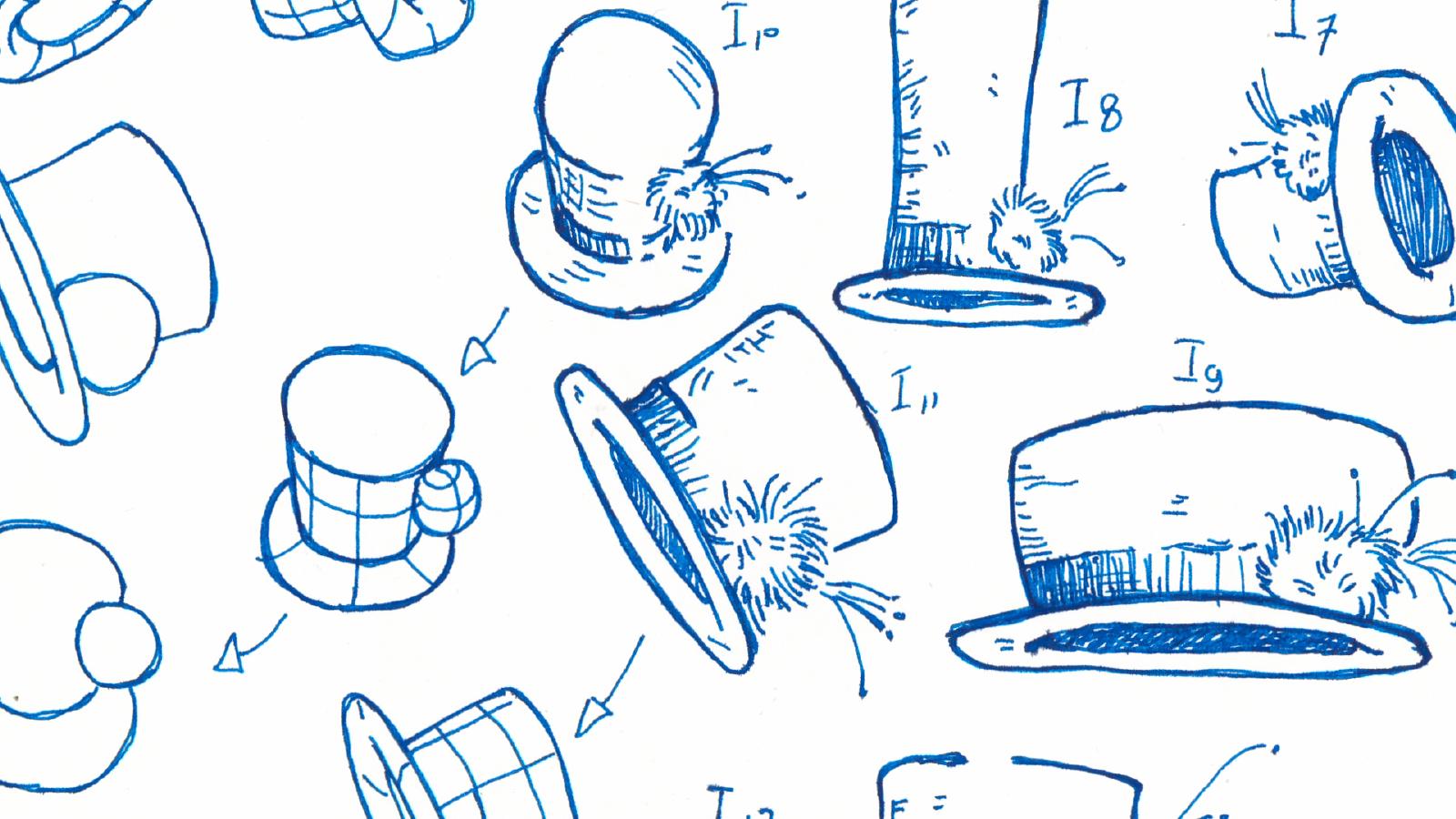
Quickly become better at drawing—without burning out—by using my workbook.
You know I harp on drawing from memory exercises a lot, and to be fair, it is not the be-all and end-all of drawing practice. (But it’s close!)
Another exercise to try is to take some shape and turn it into something.
Our brains are wired to see patterns. Look at clouds, and chances are you will start to see dogs and rabbits and faces in them.
You can make coffee stains and turn those into drawings of things.
These shapes are also great for practicing drawing from memory! They are often much simpler than actual objects.
An excellent drawing exercise I enjoy is first memorizing a random shape. Then I try to turn that shape into something: a face or head, a pose, a car or spaceship, et cetera.
I allow myself to deviate from the original shape. This is about exercising your creative muscle, after all. Be like a child again. There are no rules.
On a side note, I like to do that with drawing from memory exercises, too: if I forget what a detail looked like, I make it up. Or I add details from imagination for the fun of it.
I made this little web page that generates random shapes, but frankly, shapes are all around you. And you can also spill coffee in your sketchbook and make something of it.
More on this exercise in the new primer.
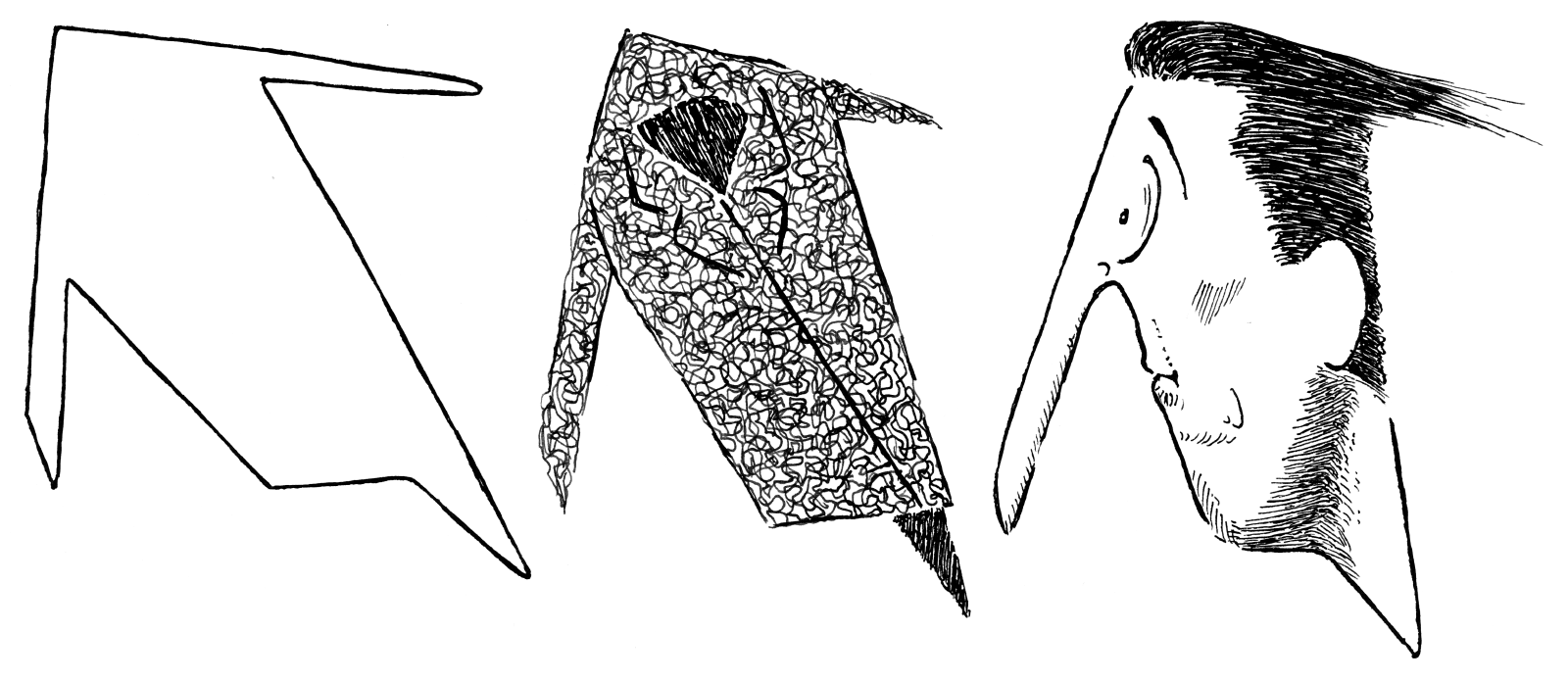
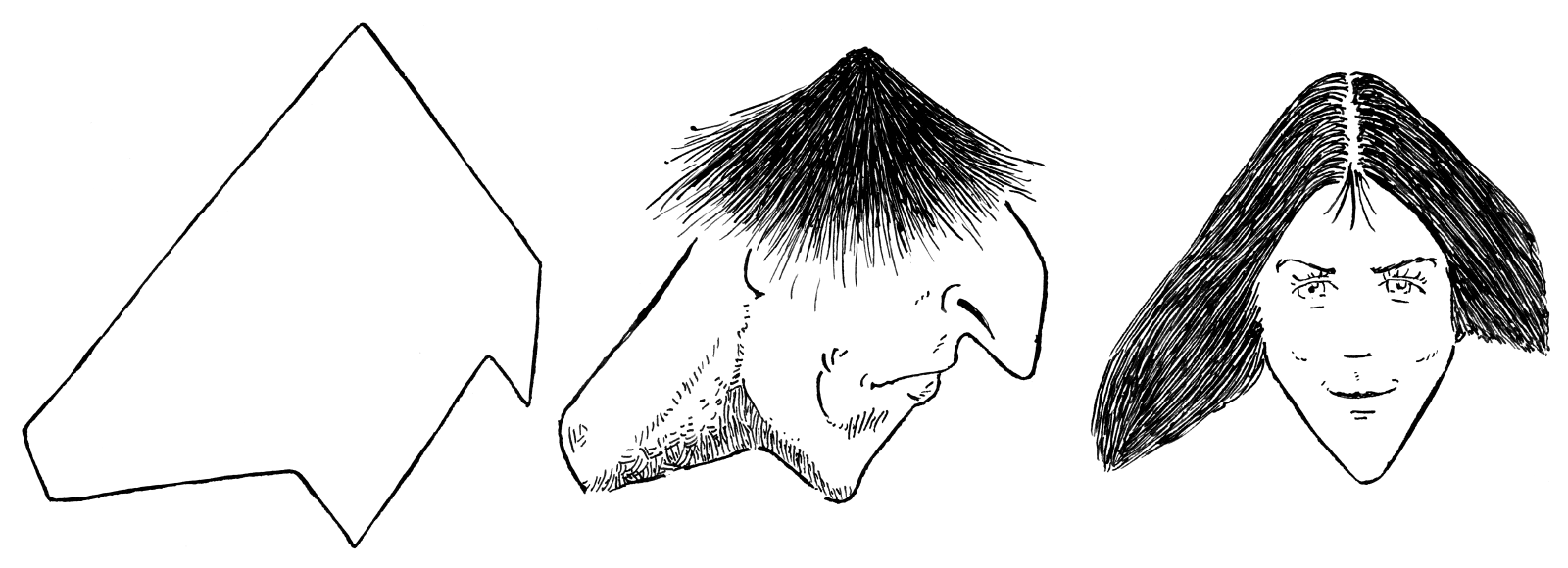
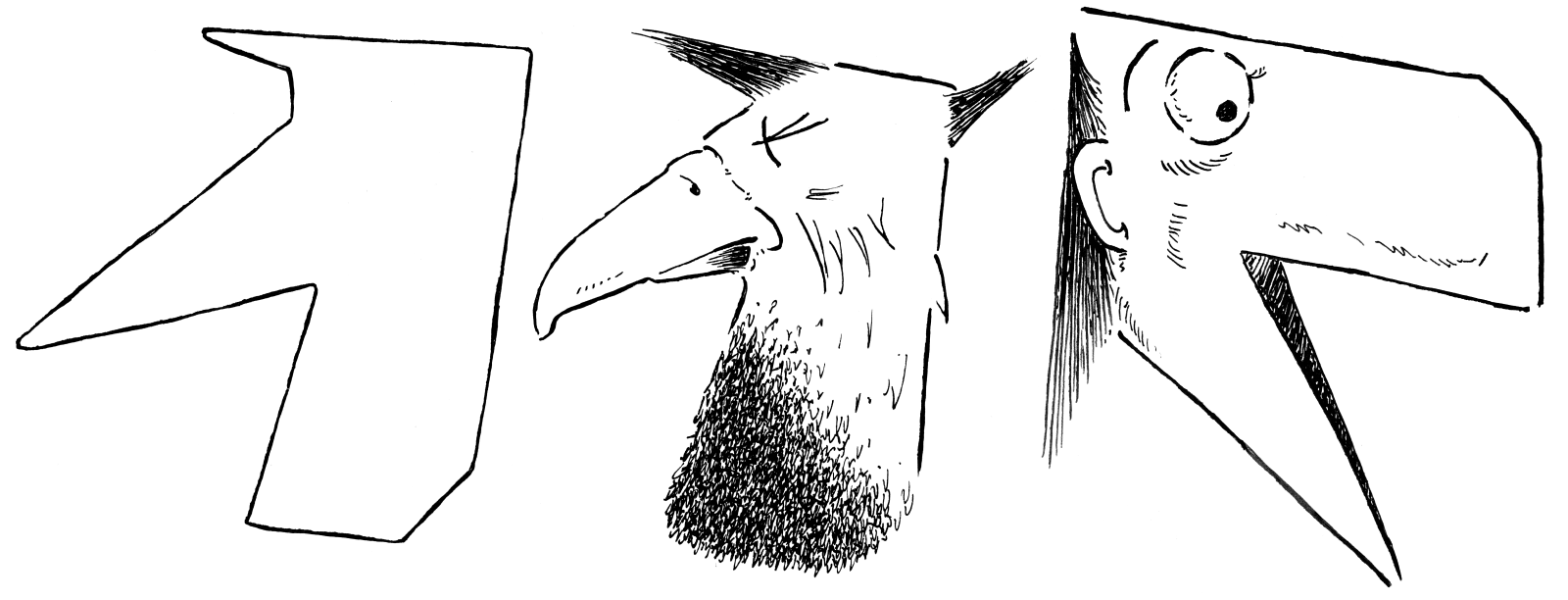
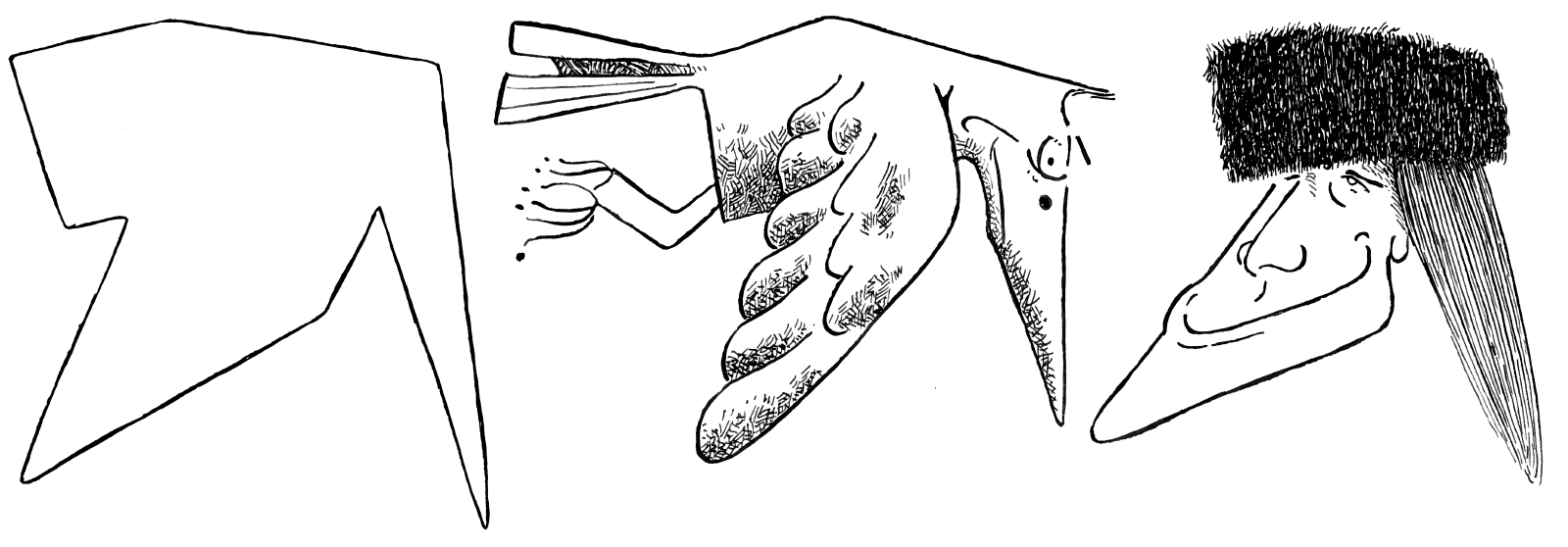
It is also a wonderful opportunity to experiment with different drawing tools and styles. As you can see in the examples in this article, I am experimenting with dip pen and ink and creating mid to dark tones by creating textures, adding only lines when strictly necessary, and making these lines graphic elements in and of themselves.
For this, I have been looking at art by Al Hirschfeld and Willy Lohmann (whom you probably don’t know because he’s Dutch and his art was in newspapers long ago.
A cool thing you can do when you struggle with your art is to see how other artists who did similar things solved these problems. You go, “aha!” and immediately understand why they handled it that way.
It’s like when you are struggling with some school homework for a week. After that, a teacher often only has to say a half word for you to instantly recognize the solution because you’ve become so intimate with the problem.
I used to start with lines, and it tended to result in drawings that were too cartoon style if that makes sense. But the artists mentioned above have started with areas with tones, building them with definite texture, only adding lines in the end where needed and making these lines graphic elements in their own right. It clicked with me, and I like my drawings better now.
The way I build up textures is informed by what I learned by digitally inking over Joseph Clement Coll’s art.
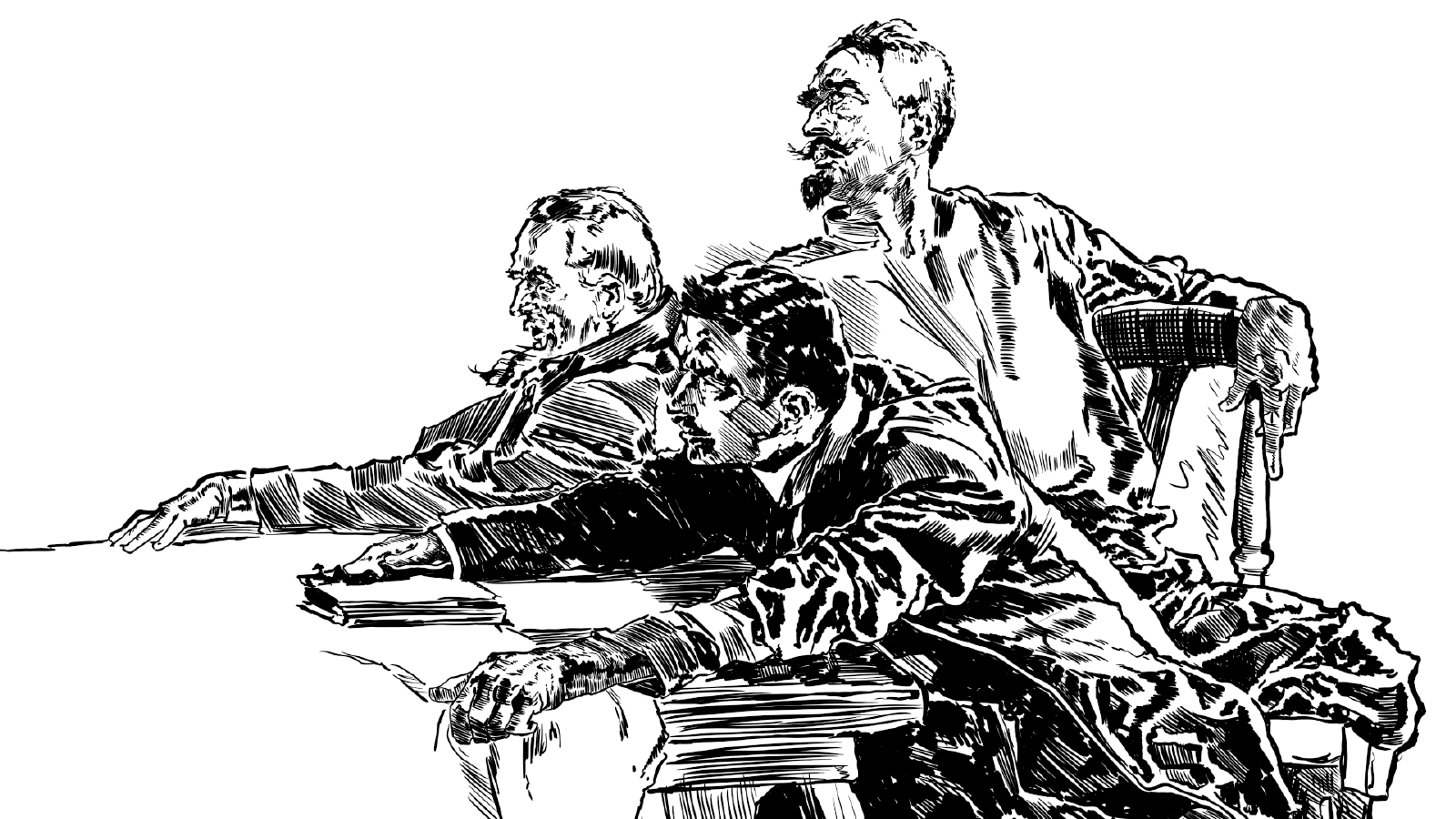
I noticed how I could get similar results by treating hatching as a texture and closing the ‘holes’ I saw in the texture. There’s so much you can learn from studying other artists, especially when looking for the solutions they found to problems you run into also.
I was planning on not showing my drawings for a while, but here we are. It was a good idea in this case.
There is less pressure when I draw for my pleasure, away from the social media limelight. But I do miss the dopamine rush that comes with publishing things. Anyway, it is helpful that I don’t feel obliged anymore, which is an improvement for me.
I am thinking about doing a series on how to draw with (dip) pen and ink as I learned so much over the years, many things I haven’t seen mentioned anywhere else, let alone in one place. You might not be interested in drawing with a pen, though. What do you think?